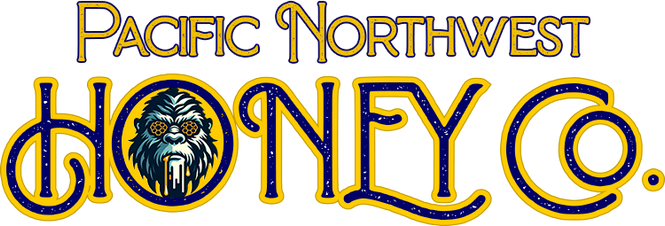A History of Honey Bees and Beekeeping in the U.S.
Jul 02, 2025
As the fireworks light up the sky and the scent of barbecues fills the air this July 4th, 2025, let’s take a moment to celebrate another American treasure: the honey bee. At PNWhoney.com, we’re proud to honor the industrious honey bee and the beekeepers who have shaped its story in the United States—a tale as old as the nation itself. From the early colonial days to the booming apiaries of the Pacific Northwest, honey bees have buzzed their way into our history, symbolizing resilience, community, and the sweet taste of freedom. Join us as we explore this fascinating journey and tie it to the spirit of Independence Day!
The Arrival of the Honey Bee: A Colonial Conquest
Honey bees (Apis mellifera) weren’t native to the Americas, but their arrival in the early 1600s marked the beginning of a transformative partnership. European settlers, seeking to replicate the agricultural practices of their homelands, brought the first honey bees to the Virginia Colony around 1622. These “white man’s flies,” as Native Americans called them, quickly spread, thriving in the wild and providing honey, wax, and pollination services. By the 1700s, bees had colonized much of the eastern seaboard, a testament to their adaptability—much like the settlers forging a new nation.
This migration parallels the pioneering spirit of July 4th, 1776, when the Declaration of Independence was signed. Just as the colonies broke free from British rule, honey bees established their own dominion, pollinating crops that fueled the growing American economy. Archaeological evidence from the period, including beeswax traces on pottery (BBC News, 2015), hints at early beekeepers harvesting this golden resource, laying the foundation for a beekeeping tradition that would flourish.
The Beekeeping Revolution: Innovators and Inventors
The 19th century brought a golden age for American beekeeping, driven by ingenious inventors whose contributions mirror the innovative zeal of a young nation. In 1853, Lorenzo Lorraine Langstroth, often called the “Father of American Beekeeping,” patented the movable-frame hive. His discovery of the “bee space”—the precise gap bees leave between combs—revolutionized hive design, allowing beekeepers to inspect colonies without destroying them. This invention, detailed in his book The Hive and Honey-bee, spread across the U.S., much like the ideals of liberty spread after 1776.
Moses Quinby followed with the bee smoker in 1873, a tool that calmed bees with smoke, making hive management safer—a nod to the peaceful cooperation that defines a free society. Meanwhile, Amos Root pioneered hive manufacturing and bee package distribution, turning beekeeping into a commercial enterprise. These advancements empowered beekeepers to produce honey on a scale that fed growing communities, echoing the self-reliance celebrated on Independence Day.
The Modern Boom: Bees in the Pacific Northwest and Beyond
Fast forward to the 20th and 21st centuries, and honey bees have become a cornerstone of American agriculture. The 2024 Census of Agriculture revealed a stunning boom, with 3.8 million colonies nationwide—up nearly a million since 2020 (Washington Post, 2024). In the Pacific Northwest, this growth is fueled by the region’s diverse flora, from Oregon’s wildflowers to Washington’s fruit orchards. California’s almond pollination drives much of the demand, but PNW beekeepers are rising to the challenge, managing hives that support local crops and produce our signature honey.
July 4th: A Sweet Celebration of Bees and Liberty
This July 4th, as we gather with family and friends, let’s raise a jar of PNW honey to the honey bee—a symbol of industriousness and community that mirrors the values of our nation’s birth. The bee’s journey from colonial import to modern marvel parallels America’s evolution from a fledgling colony to a land of opportunity. In the PNW, our beekeepers continue this legacy, crafting honey that’s as unique as our region’s landscapes—perfect for your holiday table.
So, this weekend, drizzle some PNWhoney.com honey on your barbecue ribs, bake it into a star-spangled pie, or simply savor it with gratitude. Visit our store to stock up on local varieties, and join us in toasting the sweet buzz of freedom. Happy Independence Day from all of us at PNWhoney.com—where history and honey meet!
Shop Now for the best PNW honey to celebrate July 4th! Click here to explore our collection.











